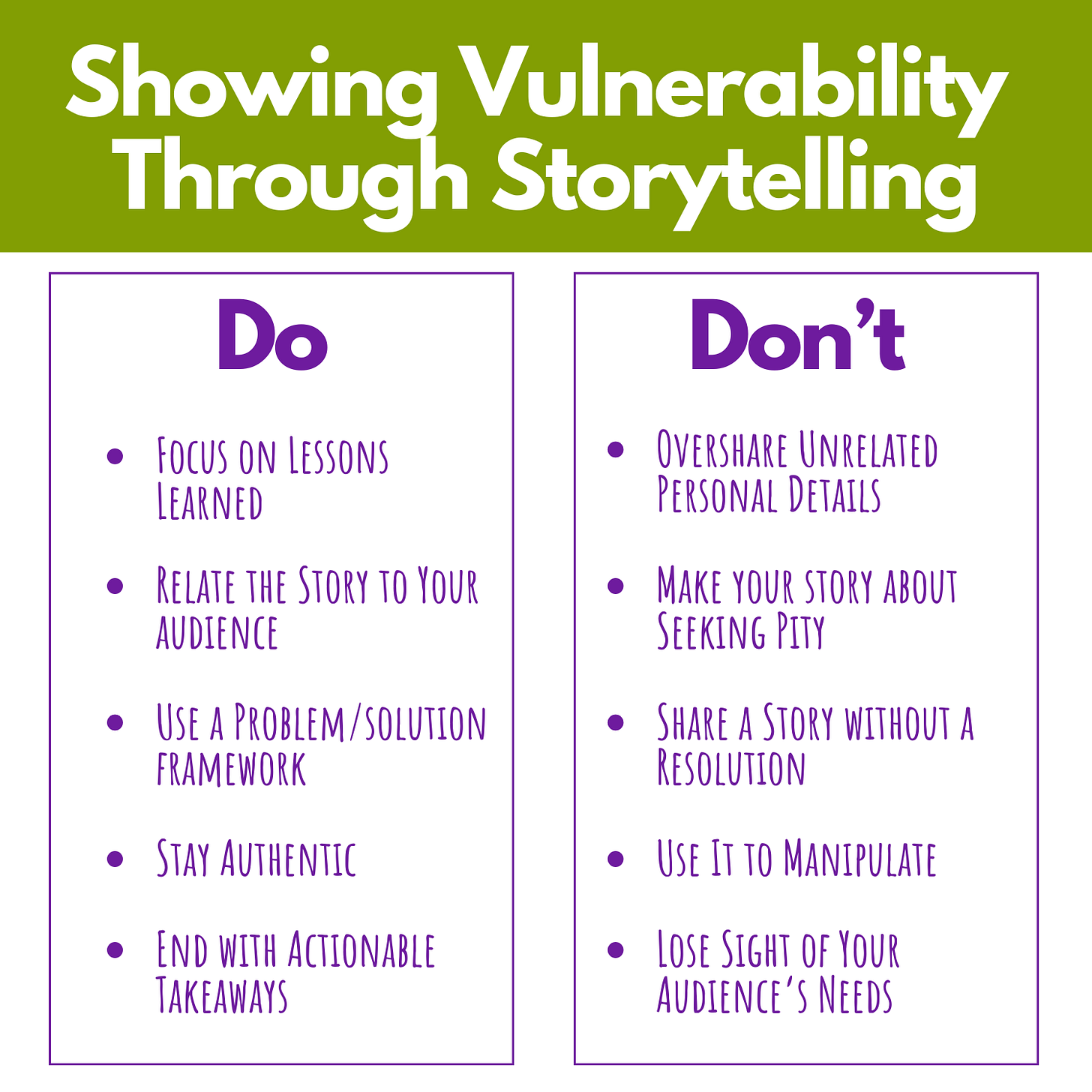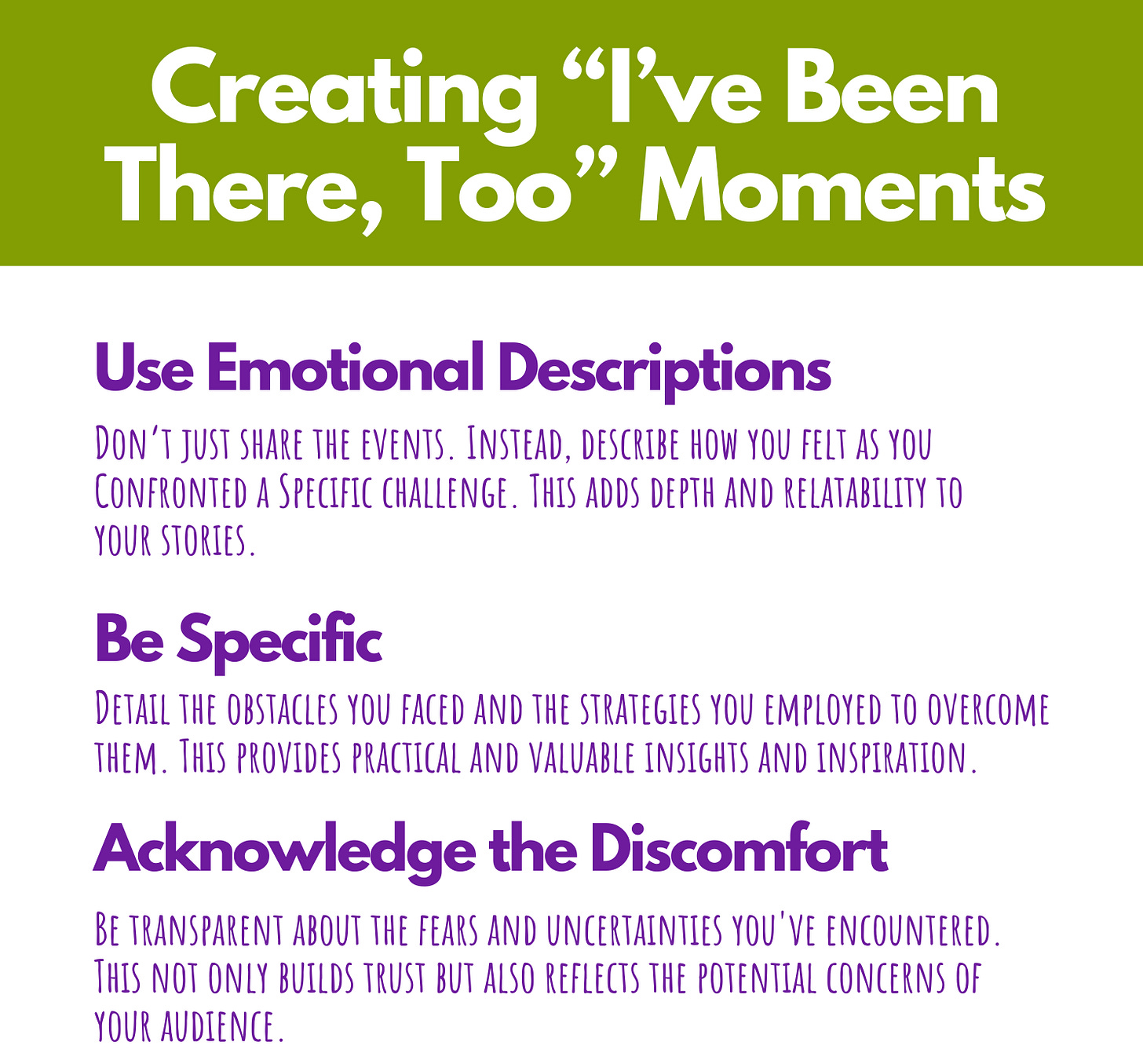To Get to "Know, Like, Trust" — You First Have to "Share, Reflect, Inspire"
Using strategic storytelling to accelerate the journey of customers knowing, liking and trusting you
“But I’m a really nice person. You can trust me!”
If someone I don’t know said something like this to me the first (or even second or third) time we meet, I’d be like:
It takes me a while to warm up to someone — and a bit longer to trust them. (You, too? Yep. I figured as much.)
Guess what? The same is true of our potential customers. They’re not naive. Odds are they’ve been burned before by another business — possibly one offering a similar product or service as yours. And they’re not about to stick their hand on that burner again!
While we know we’re nice, trustworthy, experienced, and all-around awesome human beings, those we’ve never met have a bit of catching up to do.
It’s going to take some solid work on our part to help them get to the point where they know us, like us, and trust us. Only then will they even consider paying attention to us — much less buying from us.
So, how do we move from being strangers to becoming trusted sources of information, products, services, etc?
In other words, how do we get from here…
… to here?
(Side note: For those of you who are Ted Lasso aficionados, I realize the “Godsend” gif doesn’t really mean what it appears to mean. But, hey, it works for what I’m trying to convey here. So, a little grace, please.) :-)
We get to “know, like, trust” through strategic storytelling that shares your experiences, reflects your audience’s challenges, and inspires action.
Here’s what that looks like:
Share: The Art of Strategic Vulnerability
I never really thought that much about vulnerability. Maybe that’s because I didn’t like to consider the concept (or the cost) of being vulnerable.
But my perspective about vulnerability changed drastically after watching Brené Brown’s 2010 TEDx Houston talk called “The Power of Vulnerability.”
In the off chance that you’ve never seen the video of her talk, you can watch it here:
“And I know that vulnerability is the core of shame and fear and our struggle for worthiness, but it appears that it's also the birthplace of joy, of creativity, of belonging, of love.”
Brené Brown
Driving home after giving her TEDx Houston talk — one in which she shared the story of her breakdown, her spiritual awakening and her initial resistance to therapy — she said to herself, “I will never do that again.” Brown claimed that she “literally had what I thought was one of the worst vulnerability hangovers of my career.”
This was a talk she didn’t want to be made available online because she didn’t want people (outside of the TEDx Houston event) to see it.
But it did get put up online.
It’s now one of the top five most popular TED talks of all time.
It’s been viewed more than 67 million times.
And the lesson she took away from all of this? In her own words, “If I'm not a little bit nauseous when I'm done, I probably did not show up like I should have shown up.”
Brene’s popularity skyrocketed after “The Power of Vulnerability” talk. But why?
Because the most powerful stories often aren't about our greatest successes – they're about the moments that tested us in unexpected ways.
These stories of vulnerability are about our own humanity.
They show that we aren’t perfect, we don’t have it all figured out, and things that scare others scare us, too.
These are the stories that showcase our own humanity.
And they’re the stories that make us relatable to other human beings.
Being vulnerable by sharing personal stories that reveal your authentic self is a proven way of building a deep connection with your audience.
But how do you do that effectively?
Here are some tips:
To get started, take a few minutes to make a list of a few personal and professional challenges you’ve overcome throughout your life. (We’ve all had them, so don’t be shy.)
Maybe it was a project at work that went sideways on your watch.
Maybe you took an expected or unexpected break from your career to raise your kids.
Or maybe you were laid off during an economic downturn and struggled to figure out what your next step would be.
Any hurdle you’ve had to find your way over, under or around provides an opportunity for you to be vulnerable with your audience — while also inspiring them with the story of how you persisted (and won!).
Reflect: Creating a Mirror for Your Audience

The magic of storytelling is when your audience sees themselves in your stories.
You want them to read or watch or listen to your narrative and think, “Wow! She’s been where I am!”
Humans find comfort, belonging and understanding in stories that resonate with them. They feel seen and heard. They feel less alone. And, ultimately, you hope they’ll feel more empowered.
Through your own stories about how you’ve overcome challenges or doubt or fear, you show your audience what’s possible through your lived experience. By creating these “I’ve been there, too” moments, you become more relatable and trustworthy in the eyes of your ideal customers.
Here are some tips that might help:
So, instead of saying “I started my business at 65,” you might say, “I remember sitting at my kitchen table at 65, wondering if I was too old to start something new. I had so much doubt — in my business idea, in the market, in myself. But, by surrounding myself with friends and family who believed in me and my dreams, I pushed ahead. And one of the most important lessons I learned along the way was that my timing for starting a new venture wasn’t late – it was exactly right.”
Obviously, more details are needed here — including why the timing was right at 65. But, hopefully, it illustrates the concept of mirroring the concerns of an audience.
Inspire: Stories That Spark Change
Great stories do more than entertain. They also open minds to new possibilities and ignite the spark for transformation.
By sharing stories that inspire, you can help your audience see their challenges in a new light, discover untapped potential, and feel motivated to take meaningful steps forward.
That’s pretty powerful stuff when you think about it.
While the responsibility for action rests with the listener, reader or viewer, your role as a storyteller is to ignite that spark of inspiration and leave the door open for possibilities.
Here are a few tips:
By crafting stories that inspire and empower, you become a catalyst for change, encouraging your audience to envision a better future and take their own steps toward it.
The Path to Know, Like, Trust
Before your audience can truly know, like, and trust you, they need to see themselves in your journey. And the best way to do that is through is by using the power of story.
But storytelling isn’t just about recounting your experiences. It’s also about sharing stories with purpose, reflecting the needs and concerns of your audience, and inspiring others to see new possibilities.
By focusing on these three pillars, you pave the way for deeper relationships that build trust and open doors.
Whether you’re highlighting a pivotal lesson, showing your audience they’re not alone, or sparking motivation, your stories can play a critical role in helping you create the foundation for connection.
So, as you step into the role of storyteller for your business or any other venture, remember: your experiences are the bridge, your vulnerability is the spark, and your authenticity is the key.
Start today by sharing one story—and watch the connections grow.
Have questions? Wanna say “howdy”? Great! I’m here for ALL of it! Just click the button below and let the conversation commence!
Struggling to craft content that connects and converts? Let’s fix that in just 90 minutes.
Join me for a Content Spark Session, where we’ll transform your ideas into compelling, story-driven content using proven strategies and AI-powered tools. Ready to ignite your content? Learn how a Content Spark Session can help!













Um... first, your GIF game is strong. haha
Totally agree... "Great stories do more than entertain."
Great piece!
I agree, Michele. Sometimes people get so wrapped up in the story and telling it that they forget it needs to have practical advice, takeaways, and a reason driving it in the first place.